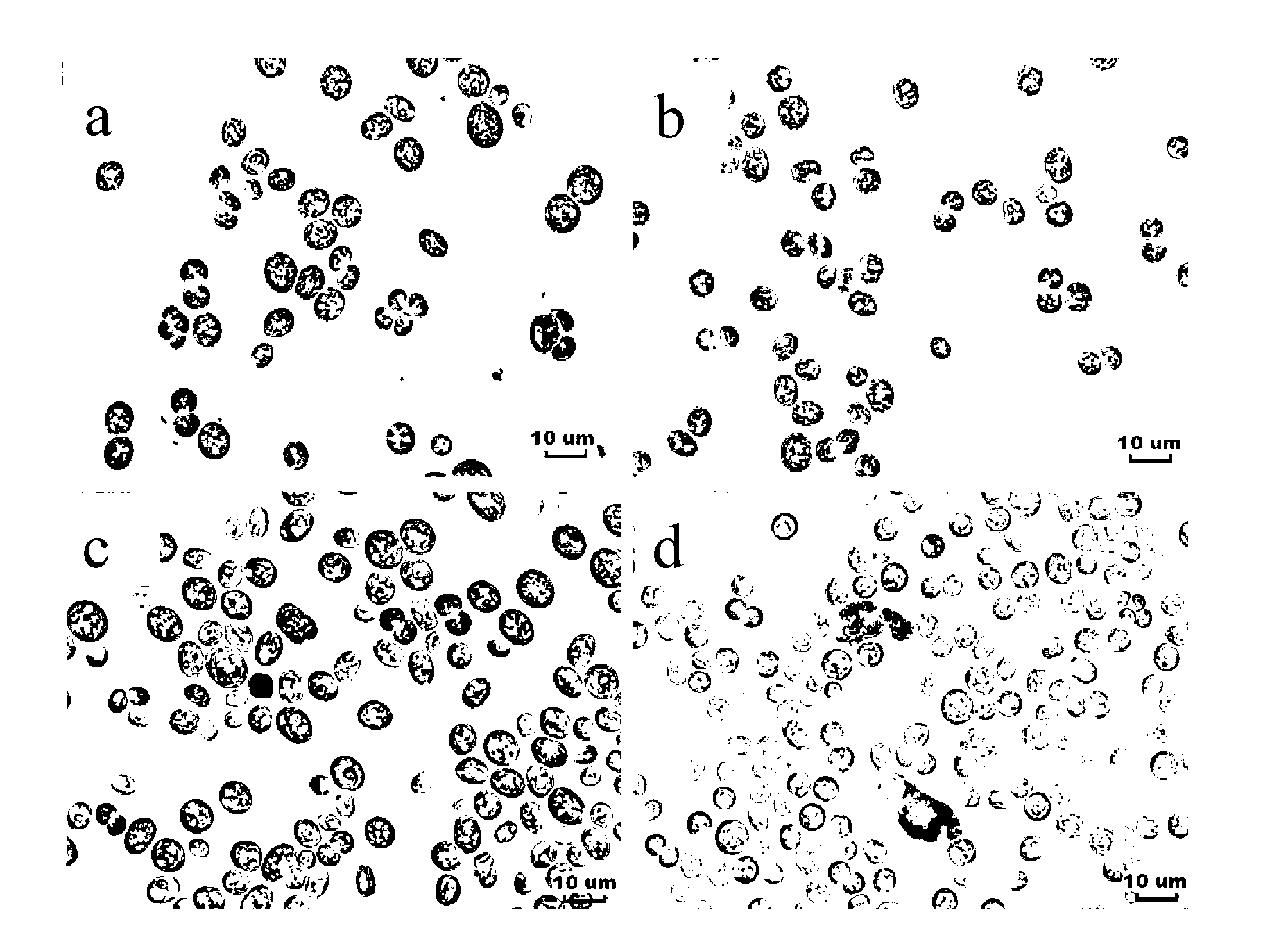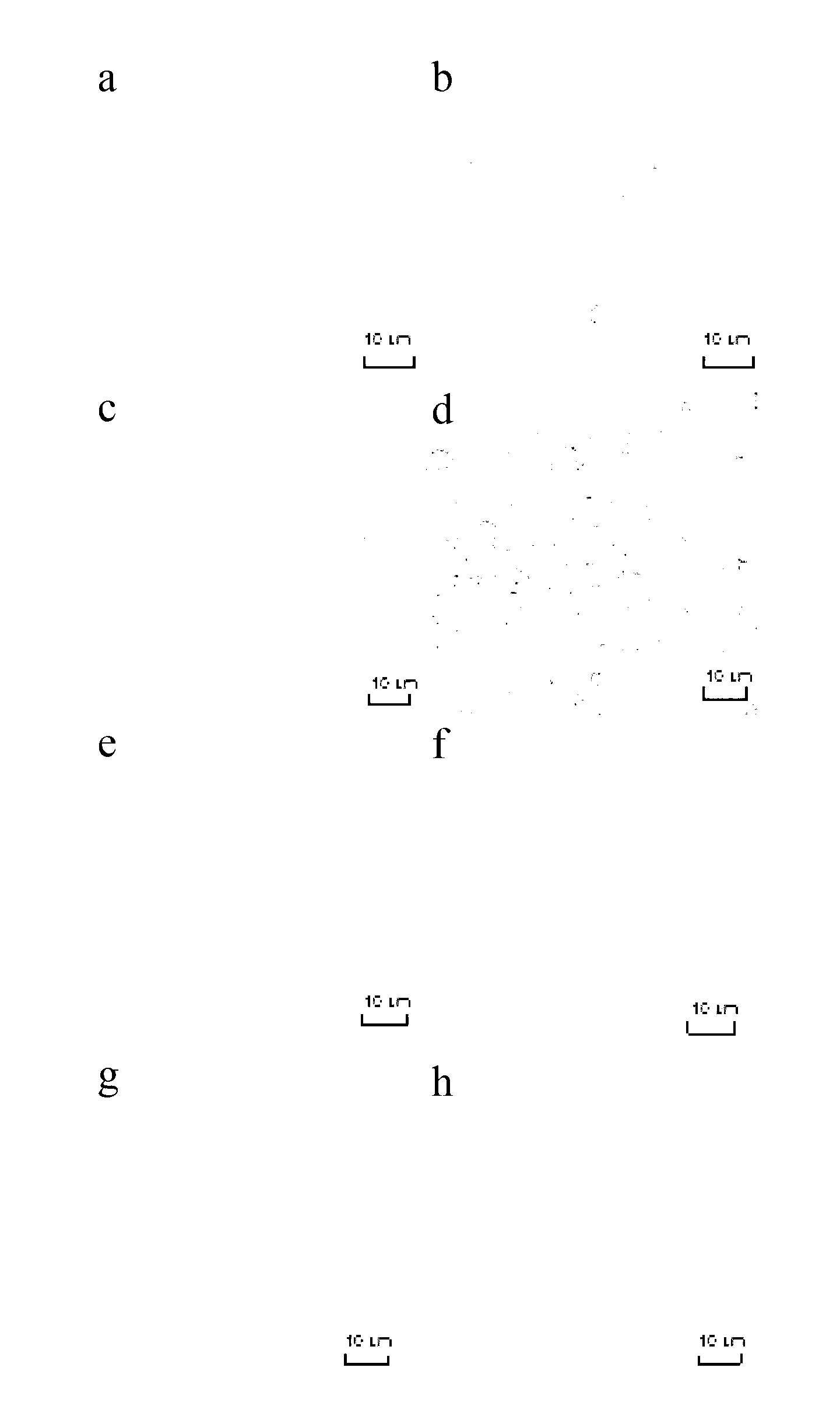Method for separating microalgae through in-situ flocculation and application thereof
An in-situ flocculation and microalgae technology, applied in the direction of microorganism-based methods, biochemical equipment and methods, microorganisms, etc., can solve the problems of the influence of medium circulation and the high cost of microbial flocculants, so as to achieve low cost, prevent loss, The effect of low energy consumption
- Summary
- Abstract
- Description
- Claims
- Application Information
AI Technical Summary
Problems solved by technology
Method used
Image
Examples
Embodiment 1
[0041] Embodiment 1: the separation of Chlorococcus ellipsoides
[0042] (1) Preparation of BG-11 culture medium: NaNO 3 (1.5g / L); K 2 HPO 4 ·3H 2 O (40mg / L); MgSO 4 ·7H 2 O (75mg / L); CaCl 2 2H 2 O (36 mg / L); Na 2 CO 3 (20mg / L); FeCl 3 ·6H 2 O (3.15mg / L); citric acid (6mg / L) and 1ml of trace element solution including: H 3 BO 3 (2.86mg / L), MnCl 2 4H 2 O (1.18mg / L), ZnSO 4 ·7H 2 O (0.22 mg / L), Na 2 MoO 4 2H 2 O (0.39mg / L), CuSO 4 ·5H 2 O (0.08mg / L), Co (NO 3 ) 2 ·6H 2 O (0.05mg / L), add until 1ml concentrated H 2 SO 4 (concentration 98% (v / v)) in 1L of distilled water, and stir evenly to obtain BG-11 culture medium.
[0043] (2) The BG-11 culture solution prepared in step (1) was used to cultivate Chlorococcum ellipsoideum UTEX972 in the incubator (purchased from the algae collection center of the University of Texas at Austin, USA). Take 2L of BG-11 culture solution for cultivation, and adjust the implantation amount of microalgae to OD 750 ≈0.6, at ...
Embodiment 2
[0048] Embodiment 2: Isolation of Pideurophylla
[0049] (1) The preparation of BG-11 culture medium is the same as that in Example 1.
[0050] (2) The BG-11 culture solution prepared in step (1) was used to cultivate Chlorococcum nivale UTEX LB2225 in the incubator (purchased from the algae collection center of the University of Texas at Austin, USA). Measure 2L of BG-11 culture solution for cultivation, the amount of microalgae implantation, cultivation conditions and cultivation time are the same as in Example 1.
[0051] When the dry weight of Pideurophylla in the culture solution is greater than 1.0g / L, use 1mol / L HNO 3 Adjust the pH value of the culture solution to 4.0, stir for 1 min at a rotation speed of 280 rpm, let stand to separate layers, and pour out the supernatant to obtain Pidelodioides. The calculation method of separation rate is the same as embodiment 1. Calculated by the formula, the separation rate after standing for 30 minutes was 90.5%.
[0052] (3)...
Embodiment 3
[0053] Embodiment 3: Isolation of Bacteroides chlorella
[0054] (1) The preparation of BG-11 culture medium is the same as in Example 1;
[0055] (2) Bracteacoccus minor UTEX B66 (Bracteacoccus minor UTEX B66, purchased from the University of Texas at Austin Algae Collection Center) was cultivated in the incubator using the BG-11 culture medium prepared in step (1). Measure 2L of BG-11 culture solution for cultivation, the amount of microalgae implantation, cultivation conditions and cultivation time are the same as in Example 1. When the dry weight of Bacteroides spp. in the culture medium is greater than 1.0g / L, use 1mol / L of HNO 3 Adjust the pH value of the culture solution to 4.3, stir for 1 min at a rotational speed of 300 rpm, let stand to separate layers, and pour out the supernatant to obtain Bacteria chlorella. (The calculation method of the separation efficiency is the same as in Example 1) The separation rate after standing for 30 minutes is calculated by the for...
PUM
| Property | Measurement | Unit |
|---|---|---|
| separation | aaaaa | aaaaa |
| separation | aaaaa | aaaaa |
| separation | aaaaa | aaaaa |
Abstract
Description
Claims
Application Information
 Login to View More
Login to View More - R&D
- Intellectual Property
- Life Sciences
- Materials
- Tech Scout
- Unparalleled Data Quality
- Higher Quality Content
- 60% Fewer Hallucinations
Browse by: Latest US Patents, China's latest patents, Technical Efficacy Thesaurus, Application Domain, Technology Topic, Popular Technical Reports.
© 2025 PatSnap. All rights reserved.Legal|Privacy policy|Modern Slavery Act Transparency Statement|Sitemap|About US| Contact US: help@patsnap.com


